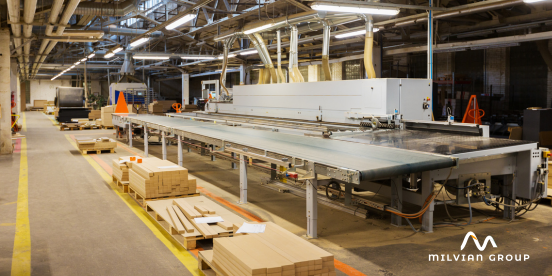Boost Manufacturing Productivity with Live Analytics
It's a highly competitive environment for manufacturing, and staying ahead of the curve requires more than traditional methods.
According to a recent report by McKinsey, the global manufacturing sector is facing significant pressures from rising costs, supply chain disruptions, and the need for increased productivity and efficiency. These challenges have forced manufacturers to seek innovative solutions to maintain their competitive edge.
The Importance of Live Analytics in Manufacturing
Lean manufacturing principles aim to minimize waste while maximizing productivity and quality. However, the complexity of modern manufacturing processes can make it challenging to identify inefficiencies and areas for improvement. This is where live analytics come into play.
Enhancing Lean Processes with Live Data
Live analytics provide Lean professionals with immediate insights into the performance of their manufacturing processes. By continuously monitoring key performance indicators (KPIs), such as production rates, machine utilization, and defect rates, manufacturers can make data-driven decisions to optimize their operations. For instance, if a machine's output suddenly drops, live data can help pinpoint the cause—a mechanical issue, a supply chain delay, or an operator error—and enable quick corrective actions.
Using Telemetry from Equipment
Telemetry data from equipment plays a crucial role in live analytics. On modern machines, this data may already be available electronically, and for older equipment this capability can be retrofit by the addition of one or more sensors. Manufacturers can comprehensively view their operations by collecting data directly from machines. This data includes vibration levels, temperature, operating speeds, and more. When analyzed effectively, this telemetry data can
- Improve Productivity: By identifying bottlenecks and inefficiencies in the production process. For example, short stoppages in an otherwise continuously operating line can add up to a significant amount of lost production over the course of a shift.
- Enhance Quality: Monitoring and maintaining optimal operating conditions reduce the likelihood of defects. This could be as simple as measuring part dimensions or as complex as using computer vision and machine learning to spot irregularities in produced parts.
- Increase Output: By ensuring machines operate at peak performance and reducing downtime through predictive maintenance.
Challenges in Gaining Value from IoT/Machine Telemetry
Despite the clear benefits, many manufacturers need help to harness the full potential of IoT and machine telemetry.
Common challenges include:
- Equipment Age: It may seem complicated to gather data from older machines.
- Data Overload: The sheer volume of data generated by modern machines can be overwhelming.
- Integration Issues: Difficulty in integrating telemetry data with other production applications, such as MES or ERP.
- Lack of Expertise: Shortage of skilled personnel to analyze and interpret the data.
The Role of AI, ML, and Generative AI
Artificial Intelligence (AI), Machine Learning (ML), and Generative AI offer powerful tools to overcome these challenges. These technologies can process vast amounts of data quickly and accurately, uncovering patterns and insights that human analysts might miss. For example:
- IoT: can bring data lost on clipboards, Excel spreadsheets, scraps of paper, or walking around in someone’s head, unavailable to be used and analyzed
- AI and ML: Can predict equipment failures before they happen, allowing for proactive maintenance and reducing downtime.
- Generative AI: Can simulate different manufacturing scenarios, helping Lean professionals test and refine their processes without disrupting production.
By leveraging these advanced technologies, manufacturers can transform raw telemetry data into actionable insights, significantly improving productivity, quality, and overall efficiency.
Live analytics and machine telemetry are indispensable tools for modern Lean manufacturing. They provide the critical insights to drive continuous improvement and maintain a competitive edge in a challenging economic environment. By embracing AI, ML, and generative AI, manufacturers can unlock the full potential of their data, leading to more intelligent, efficient, and resilient operations.
By incorporating live analytics into Lean manufacturing processes, professionals can gain a strategic advantage, ensuring their operations are efficient and adaptable to the market's ever-changing demands.
Interested in learning more? Our experts are here to help.
References
[1] McKinsey & Company. (2023). The future of manufacturing: How to navigate the rising pressures.
.png?width=50&name=2024%20Headshots%20500%20x%20500%20(1).png) By
By


